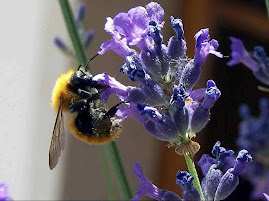
Outros Nomes Populares: aipo-rábano.
Espaçamento: 90 centímetros entre linhas e 30 centímetros entre plantas.
Colheita de Folhas, Talos e Raízes: após 4 meses do plantio.
Saudável e refrescante o aipo é actualmente muito valorizado pelas suas propriedades culinárias mas também pelas suas propriedades terapêuticas graças ao seu alto conteúdo em água biológica, vitaminas, minerais e bioflavonóides.
Considerado um dos melhores diuréticos vegetais que existem reconhece-se a sua capacidade para remineralizar o organismo, desintoxica-lo, depurar o sangue, melhorar a digestão, diminuir a pressão arterial, regular o peristaltismo intestinal, abrir o apetite e aliviar as dores articulares além de prevenir e combater o cancro.
Sem esquecer que tem propriedades anti-inflamatórias, antioxidantes, expectorantes e sedantes. É um daqueles alimentos que não devem faltar na mesa
No entanto, não seria até á Idade Média quando na Europa cresceu o interesse pelas suas propriedades. Hoje cultiva-se em praticamente todas as regiões temperadas do mundo e cada vez mais pessoas a levam á sua mesas sabedoras das suas mais que interessantes propriedades nutricionais e terapêuticas.
Primo da salsa e do funcho o aipo pertence á família das umbelíferas. Os tratados de Botânica dizem que se trata de uma planta bienal de raiz e caules estriados comestíveis que se distinguem 15 variedades sendo a mais importante e consumida o Apium graveolens var.dulce.
Em todo o caso dois são as variedades mais cultivadas na Europa: o aipo em rama -que forma uma grossa penca com folhas cunhadas e que é a mais comum na Espanha - e o chamado aipo-rábano – um bolbo rugoso em forma de batata que apenas se consume em Espanha mas faz parte de muitos pratos dos países do norte da Europa.
A diferença entre ambas é que de a primeira consome-se o talo e as folhas e a segunda só a base do talo.
Portanto, o aipo mais fácil de encontrar nos supermercados é o de talho grosso, oco, estriado e alongado que se compõe de pencas verdes de forma cilíndrica longitudinalmente recorridas por um profundo sulco e de onde brotam folhas com aspecto parecido á salsa.
Além disso, para guisar pode-se utilizar inclusive as sementes pulverizadas como se fossem sal. Podem ser consumidos crus, fritos, cozidos, recheados ou liquefeito.
Mas se realmente algo o destaca, é, na verdade a sua capacidade para remineralizar o organismo pois contem abundante potássio, sódio – considera-se a hortaliça que mais contribui - e doses consideráveis de cálcio, zinco, magnésio, ferro, enxofre, fósforo, manganês, cobre, alumínio e silício.
Os especialistas assinalaram também que no corpo a relação entre potássio e sódio é de 2 para 1 e no aipo existem 3 partes de potássio por cada uma de sódio e, por tanto, trata-se de uma proporção excelente para quem padece de hipertensão ou toma diuréticos sintéticos porque a diferencia de estes em relação ao aipo é que este ultimo ajuda a eliminar o excesso de líquido sem desequilibrar a relação adequada de ambos minerais.
Deve-se acrescentar que muitas das suas propriedades devem-se ao óleo essencial que contem - composto por apiol, limoneno, psoralenos e apiína assim como a sua riqueza em terpenos - entre eles os flavonóides como a apigenina e a luteolina - que são os que lhe proporcionam a sua capacidade antioxidante, anticancerígena, antibacteriano e antimicótica (sendo especialmente útil em casos de infecção das mucosas das vias urinarias).
O aipo, em suma, aumenta a micção e dilata os vasos renais favorecendo com isso a eliminação de líquidos retidos no corpo e uma expulsão mais rápida e efectiva das substâncias tóxicas ou de resíduos.
Também contribui para eliminar os cálculos renais e biliares assim como as areias que acabam pode se formar, depura o sangue, ajuda a limpar tanto o intestino como os rins e a bexiga, a prevenir doenças que derivam da acumulação de impurezas para ajudar o trabalho do fígado (que não deve esforçar-se tanto para depurar o sangue). Razões que, sem dúvida, justificam o seu consumo como depurativo e desintoxicante além de ser eficaz em casos de hiperuricémia, gota, doenças articulares e reumatismo. Noutras palavras, o aipo é anti-hipertensivo e cardioprotector.
Obviamente o maior volume de urina que se expulsa graças ao aipo ajuda a baixar a tensão arterial mas estudos levados a cabo por William Elliot - professor de Medicina e Farmacologia na Universidade de Chicago (E.U.A.) - indicam que pode preveni-la graças a um dos seus compostos, o ftalido – substancia que lhe confere o seu peculiar aroma -, e esta substancia relaxa os músculos lisos dos vasos sanguíneos ampliando o seu diâmetro.
Ao que parece, o seu mecanismo de acção consiste em bloquear a actividade da enzima produtora das catecolaminas – consideradas as “hormonas da tensão ou do stress” - que provocam a contracção dos vasos sanguíneos elevando com isso a pressão arterial.
Ou seja, o aipo reduz a pressão ao suprimir a produção de hormonas que causam a sua elevação. Algo que o professor Elliot constatou mediante uma experiencia com animais que demonstrou que aqueles a que se alimentou com 2 talos de aipo tiveram no dia seguinte uma pressão sanguínea 14 vezes menor que aqueles a que não se deu.
Está estudada também a capacidade de alguns dos componentes do aipo para prevenir e tratar o cancro. Assim, sabe-se que além dos ftalidos e dos poliacetilenos - reconhecidos antioxidantes - esta hortaliça contem outras seis famílias distintas de compostos que contribuem para eliminar do organismo diversos agentes carcinógenicos, especialmente os que contem no fumo dos cigarros.
De facto especialistas espanhóis da Faculdade de Medicina da Universidade de Múrcia e da Unidade de Oncologia Radioterápica da Cidade Sanitaria Virgen de Arrixaca estudaram a actividade anticancerígena da apigenina em células murinas de adenocarcinoma de próstata e de melanoma com diferentes doses e em distintos períodos de tempo observando-se a viabilidade e citotoxicidade celular, a indução de apoptose e as modificações estruturais e ultraestructurais induzidas por ela nas células cancerosas.
Os resultados obtidos demonstraram, segundo os especialistas, que sobre a línea tumoral do adenocarcinoma prostático a apigenina “produz uma inibição progressiva da proliferação celular que varia desde 30% em 24 horas até 90% em 72 horas, todos eles com uma apoptose inferior a 10%” menor que sobre o melanoma mostrava “uma inibição de 100% no crescimento celular a doses de 25 mm sendo a inibição da proliferação de 60% em 24 horas e de 35% em 48 horas respectivamente a cultivos de controlo.
Com doses menores observa-se uma inibição do desenvolvimento celular mas não são estatisticamente significativos”.
Resumindo, os especialistas concluíram que a apigenina inibe a proliferação celular em ambas líneas tumorais murinas embora de forma mais intensa no caso do melanoma.
Foi constatado que possui uma potente actividade anti-proliferativa sobre 27 líneas de células cancerosas e diminui a toxicidade da quimioterapia no coração e na medula espinal. Também inibe a enzima aromatase e previne a formação excessiva de estrogénio evitando a ligação de estas com células cancerosas da mama. Tem propriedades anti-inflamatórias.
Ou seja, as microglías são as células responsáveis pela defensa imunitária do sistema nervoso central e do cérebro. Durante 21 dias os investigadores administraram aos ratos, agua com luteolina e logo lhes injectaram um lipossacárido de uma bactéria patogénica que põe em marcha nos ratos o mecanismo defensivo da inflamação.
Resultado: “A luteolina – pode ler-se no relatório publicado - reduz a inflamação induzida pelo lipossacárido dentro das quatro horas posteriores à injecção”. Os mecanismos de acção ainda estão a ser estudados mas pensa-se que o que a luteolina faz é deter a produção de moléculas inflamatórias e abrandar esta a nível cerebral pelo que poderia “ajudar a contrariar a demência causada pela inflamação no cérebro em enfermidades como o Alzheimer ou a variante humana deste, a doença das vacas locas”.
Ajuda a relaxar
O aipo também tem propriedades sedantes e tranquilizantes graças à sua riqueza em vitaminas do grupo B e daí a sua capacidade para aliviar notavelmente as moléstias ocasionadas por Contracturas, cãibras e cefaleias tencionais.
Embora estas propriedades relaxantes também se devam em parte ao flavonóide apigenina já mencionado que tem efeitos ansiolíticos mas sem chegar a provocar relaxação muscular nem sedação excessiva. Este flavonóide é capaz de unir-se aos receptores GABA-A cerebrais acalmando a ansiedade como fazem as benzodiacepinas -componentes principais de um bom número de ansiolíticos sintéticos - mas sem provocar a depressão do sistema nervoso central que provocam esses fármacos.
Facilita a digestão
Além de aumentar a produção de saliva e sucos gástricos, o aipo abre o apetite e facilita a digestão enquanto aumenta os movimentos naturais do intestino prevenindo gases e cólicas, além de neutralizar o excesso de bactérias responsáveis pelas fermentações e putrefacções intestinais. Assim actua como um laxante suave graças à sua fibra. No entanto, deve-se ter em conta, que consumido cru em grandes quantidades pode ser indigesto.
E se isso não bastasse aipo também:
- Reforça o sistema imunitário devido ao seu conteúdo em substâncias antioxidantes.
- Melhora a acne ao favorecer a depuração do sangue e ter propriedades antibacterianas.
- Faz aumentar o desejo sexual - propriedade afrodisíaca conferida pela cumarina que contem - e facilita a erecção.
- Ajuda a limpar feridas e queimaduras facilitando a sua cicatrização quando usado de forma tópica. Devido às suas propriedades antibacterianas e anti-inflamatórias pode-se empregá-lo para fazer bochechos em caso de infecção ou inflamações.
- Também tem propriedades benéficas para a pele, para os pêlos e os ossos devido às furanocumarinas e psoralenos que contem e que actuam como protectores da pele e estimulantes da repigmentação. Por isso está-se a utilizar hoje em dia o aipo em casos de psoríase e Vitíligo assim como em outros problemas da pele ou que se manifestam nela como a acne.
- Favorece a expectoração em caso de catarro, gripe, bronquite, etc.
- Ajuda a perder peso pois favorece a expulsão dos líquidos retidos e das substâncias de resíduos acumuladas. Devido à sua riqueza em minerais ajuda a quem sofre de fatiga crónica.
- Ajuda a regular os períodos menstruais.
- Usado como cataplasma reduz o inchaço dos olhos.
Resumindo, o aipo é uma excelente aposta natural para prevenir numerosas doenças e manter a saúde.
A melhor época para comprar aipo fresco é no inverno, embora hoje se encontre em qualquer estação do ano.
Não deve ser tomado muitas vezes ou em número significativo pois pode causar graves danos nos rins ou inflamação da bexiga. E, evidentemente, não deve ser ingerido durante a gravidez devido ao seu conteúdo em apiína que pode causar aborto.
Enquanto a sua conservação ideal é mantê-lo no frigorífico envolto em papel húmido (três dias como máximo pois logo perde propriedades) também pode congela-lo após escaldá-lo previamente durante três minutos.
- Afrodisíaco
- Analgésico
- Anti-bacteriano
- Anticancerígeno
- Depurativo e Diurético
- Regulador intestinal
- Anti-inflamatório
- Cicatrizante (uso externo
- Remineralizante
- Antimicótico
- Expectorante
- Sedativo
- Antioxidante
- Hipotensor
- Tranquilizante
- Anti-séptico (uso tópico)
- Inmunoestimulante
- Vasodilatador.
- Cardioprotecto
- Laxante
- Purificador do sangue
Indicações
- Acne
- Gota
- Hipercolesterolémia
- Artrite reumatóide
- Constipação
- Dispepsia
- Artrose e Reumatismo
- Gripe
- Cistite
- Bronquite
- Fadiga
- Hipertensão
- Cancro
- Hiperuricémia
- Impotência sexual
- Inapetência
- Oligúria
- Problemas cardiovasculares
- Psoríase
- Retenção de líquidos
- Vitíligo




















































.jpg)
.jpg)


.jpg)































